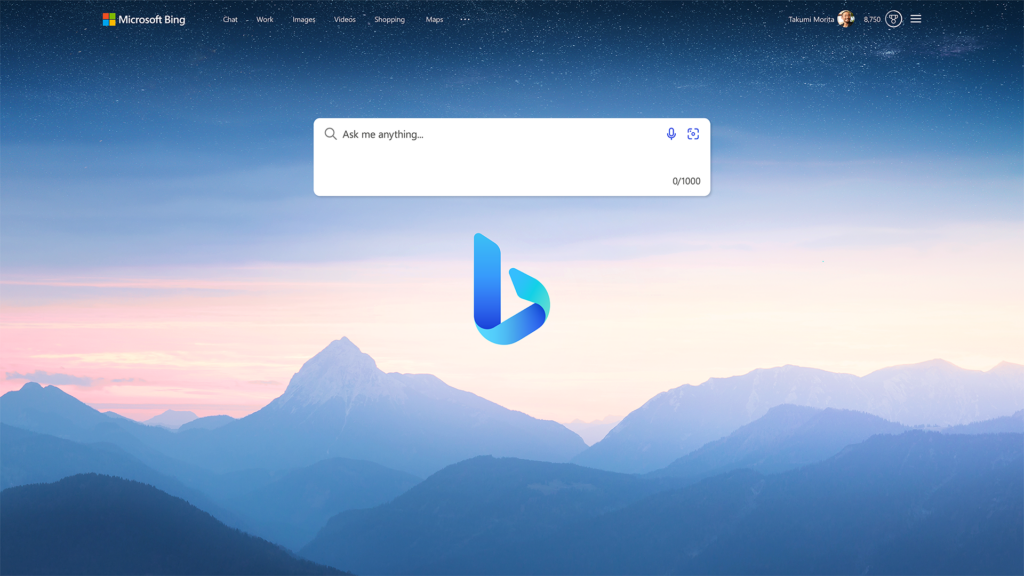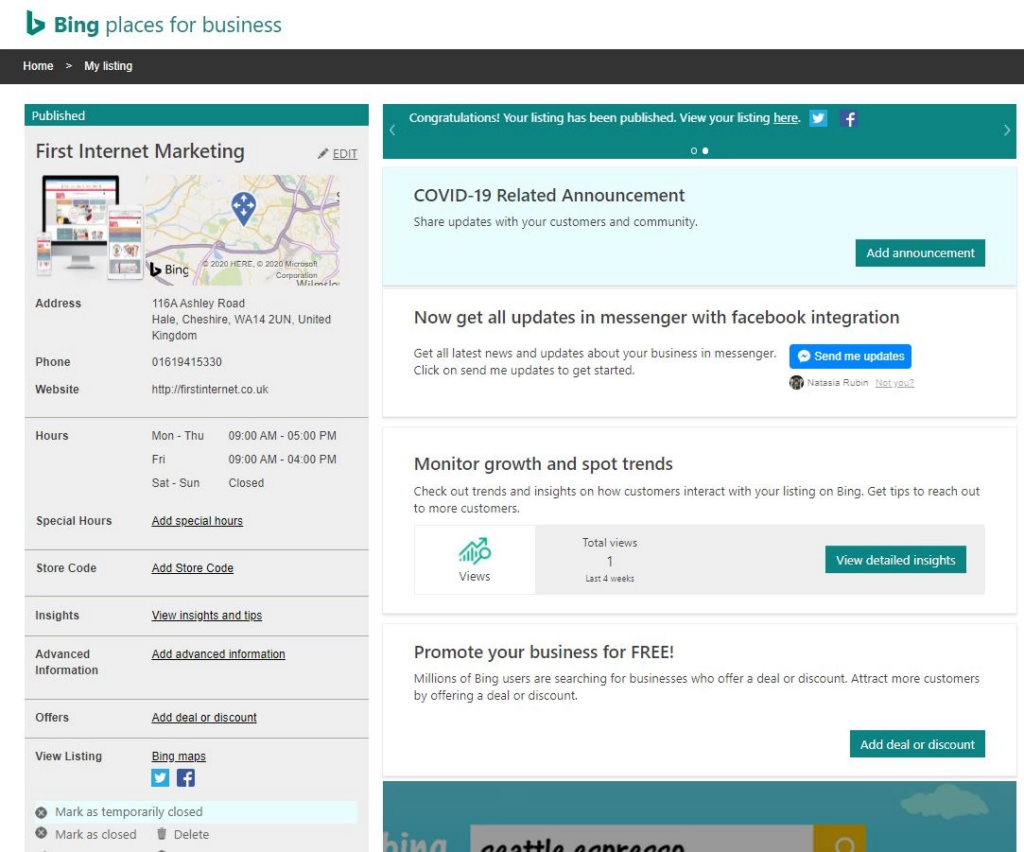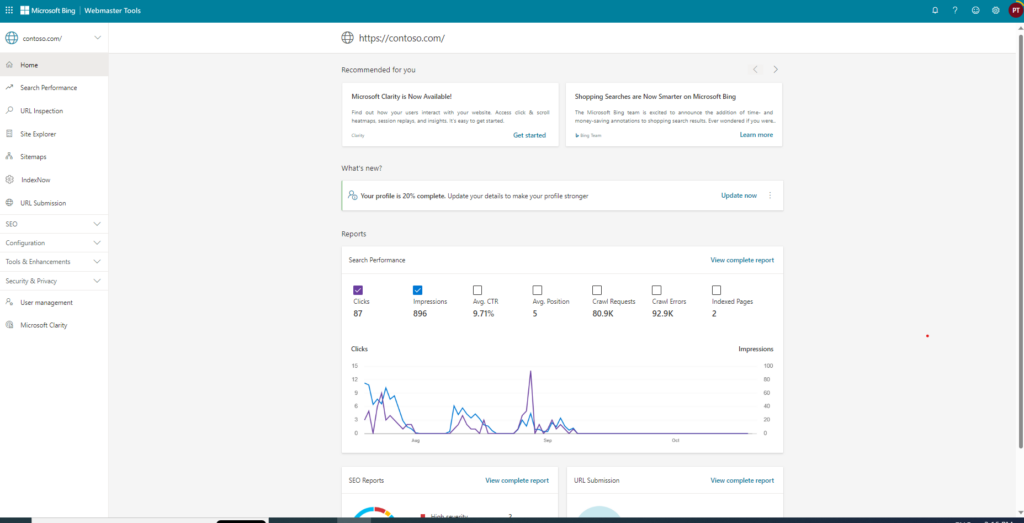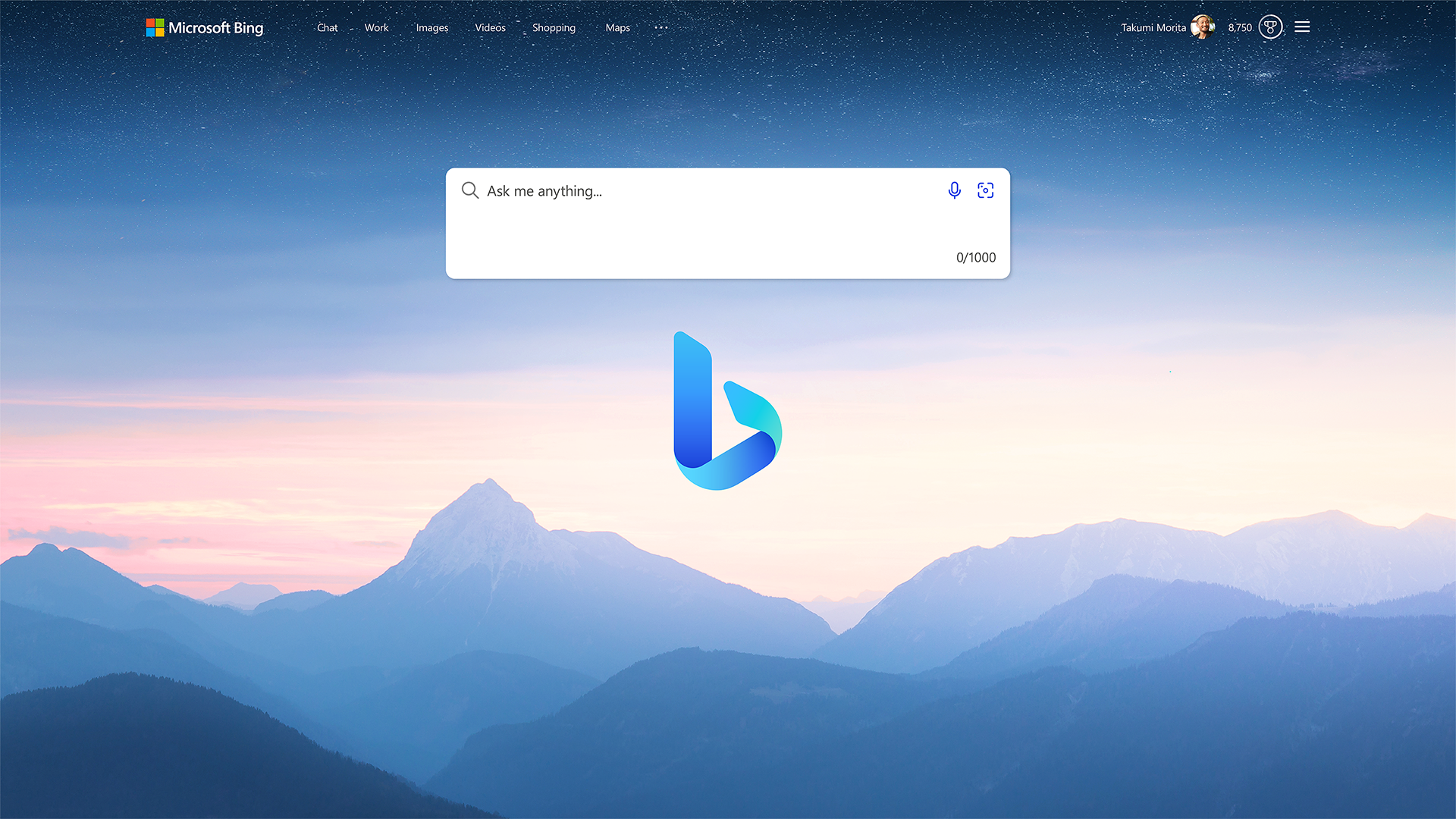want expert advice on your website? get in touch for a free website audit
book your free website audit
When it comes to discussions about SEO, Google takes centre stage in most conversations. Many marketers and businesses are hungry for that top spot in Google search engine results pages (SERPs), often forgetting about its fellow runner-up, Bing! While it doesn’t come close to the search engine giant, Google, users have been showing Bing its fair share of love since its launch in 2009.
While Google has been the go-to search engine for many internet users, it’s important to not overlook the importance of Bing SEO. Ignoring Bing in your SEO strategy could mean missing out on some serious traffic. Many people are using Bing every day for their search queries and the default settings in Windows make sure of that. And with Bing ranking as the second largest search engine globally, there’s no doubt people are using it.
In this blog, I cover what sets Bing apart from other search engines and share some insight into optimising your website to fit Bing’s algorithms.
Benefits of Bing SEO for Your Website:
One of the key reasons to focus on Bing SEO is its demographic. Bing tends to attract an older, more affluent crowd compared to Google. This means if your target market fits that bill, optimising your website for Bing could be a smart and strategic move. By catering to Bing users, you’re getting in front of potential customers who are more likely to spend big.
But it’s not just about who’s using Bing – it’s where they’re using it. Bing dominates search results across Microsoft’s ecosystem, including Windows, Edge Browser, and Cortana. That means optimising for Bing can boost your visibility on these platforms too. More eyeballs, more chances to reel in customers on these related platforms.
Additionally, Bing’s algorithm plays by its own rules and differs from Google’s. This means there are different requirements for optimising your site. While there is some overlap with Google’s SEO, Bing puts more weight on things such as backlinks and social media signals. Knowing these factors and tweaking your site accordingly can give you a leg up in Bing’s rankings.
Bing also has a much lower competition compared to Google. Most marketers put all their eggs in Google’s basket, which presents an opportunity to stand out on Bing. With less competition, your website has a better chance of ranking higher in Bing search results.
When considering the benefits of Bing SEO, it’s important to understand the facts and figures associated with the search engine. While Google still dominates search engines, Bing’s not exactly a minor player. According to recent data, Bing holds about 7.79% of the desktop search market share, which adds up to a hefty chunk of potential customers. Plus, Bing has been stepping up its game with the integration of Microsoft Copilot. Copilot is Microsoft’s brand-new AI assistant which features a chatbot that competes head-to-head with many people’s beloved ChatGPT. This advanced technology positions Bing as a search engine that leverages the power of cutting-edge AI to provide a better user experience.
The bottom line is, don’t sleep on Bing SEO. Bing SEO can provide a number of benefits that can help reel in new customers. Take the time to understand its unique algorithm, optimise your site accordingly, and watch your traffic grow.
Microsoft Copilot and AI-powered Bing search engine:

Microsoft Copilot is Microsoft’s new AI-powered tool that provides users with answers based on their prompts. The tool is powered by machine learning and teams up with GitHub and OpenAI, making use of the GPT-4 language technology.
Microsoft has bundled up search, browsing, and chat into one seamless platform which you can access from anywhere online. This allows Bing to step up its search game, providing users with a much better search experience. The tool is all about giving you the most relevant information right off the bat, whether you’re checking sports scores, stock prices, or even the weather. This AI-powered assistant also summarises information from across the web giving users the answers to the most complex of searches. For certain prompts, you might spot a ‘Learn More’ tab at the end of your answer. This section includes the references used in Copilot’s answer, which is often information pulled from the top-ranking websites it finds. So, if you’re aiming for that prime spot in the ‘Learn More’ tab, it’s worth considering optimising for Bing. It could give you a leg up in this new era of search.
Microsoft has also given Microsoft Edge a makeover! They’ve updated the Edge browser with AI capabilities and a fresh look. They’ve added the Edge Sidebar, so now you can access tools and features right there beside your browsing window. No need to hop between tabs anymore—it’s all right at your fingertips. This new AI-powered browsing experience takes a one-up on the current Chrome experience.
With all these exciting changes, it’s not surprising if more and more people start jumping on the Edge bandwagon. This calls for the perfect opportunity to start optimising your website for Bing’s search algorithms.
Difference Between Google SEO and Bing SEO:
Bing and Google might seem like two peas in a pod, but when it comes down to SEO, they have their differences. Let’s get into the nitty-gritty differences between Google SEO and Bing SEO:
- Keywords:
Google: Google uses semantic search to improve user search. Instead of just scanning for specific keywords, Google aims to understand the intent behind your search and the context surrounding it. Exact-match keywords matter less, so including keywords related to your content is key to ranking on Google. It makes your content seem relevant in Google’s eyes.
Bing: While Google is all about understanding the bigger picture and context, Bing still puts a lot of emphasis on those exact-match keywords. Their Webmaster Guidelines urge its users to conduct thorough keyword research and create content based on that keyword.
- Media and Flash:
Google: While Google likes when users insert images into their content, it doesn’t prioritise it significantly. Flash content has also been deprecated due to security concerns. So, you won’t be seeing much flash content pop up in Google searches these days. It’s all about keeping things safe and streamlined.
Bing: Bing’s got a soft spot for multimedia and they’re all about giving a little extra love to websites that spice things up with videos and photos. It also interprets Flash content better.
- Backlinks:
Google: Backlink quality matters but Google doesn’t place too much emphasis on it and it isn’t at the top of their ranking factors. Google’s more about the overall picture – they’re checking out your content and user experience.
Bing: The quality of your backlinks can make or break your website. It’s a major player in Bing’s ranking game, so if you’re gunning for that top spot on Bing, you better make sure your backlinks are high quality.
- Local Search:
Google: Google dominates local searches with Google My Business and Google Maps, making it the hotspot for local businesses to promote their businesses.
Bing: Bing offers some local search features with its very own Bing places but has a smaller market share.
- Algorithm Differences:
Google: Google doesn’t mind showcasing content from newer domains and isn’t afraid to change up its algorithms to penalise for things like keyword stuffing.
Bing: Bing favours older domains as they view them as more authoritative and don’t seem to penalise for keyword stuffing as much as Google does. Bing also gives extra points for links from domains like .org, .edu, and .gov – it’s like a stamp of credibility.
- Crawling and Indexing:
Google: Google’s crawling and indexing system, including its search crawlers. These crawlers are on the lookout for something new and exciting, often crawling websites more frequently. So if you’re constantly updating your site with fresh content, Google’s crawlers are going to be all over it. Indexing is based on various factors – how much authority your site has, and whether users are having a good time navigating around.
Bing: Bing’s crawling and indexing may not be as swift as Google’s. So, if you’re putting out new content, it might take a bit longer for Bing to notice and include it in their search results. That can affect how visible your site is to people searching. However, Bing does offer tools like Bing Webmaster Tools, to make sure your website gets the attention it deserves. With these tools, webmasters can tweak things to help Bing find and index their content more efficiently.
You may also like: The Importance of Readability For SEO!
Tips on how to Improve Your Bing SEO:
Link Building:
Bing, unlike other search engines, emphasises the importance of quality over quantity when it comes to backlinks. They’re looking for reputable sources more than just a bunch of links from any old site.
Bing loves those organic links from websites that actually fit your niche. For example, if you’re running a travel blog, a link from a travel forum or website is like hitting the jackpot.
But here’s the deal: Bing’s not a big fan of shortcuts. They’re all about playing the fair game, so if you’re thinking of taking shortcuts like buying links or doing some shady link exchanges, think again. Bing’s algorithms are smart enough to identify these kinds of link-building tactics, and you could end up with a penalty on your hands.
A great way to build quality backlinks is by contributing guest posts to reputable sites – just make sure you’ve got something worth saying. And of course, create killer content that people can’t help but share.
On-page SEO:
To capitalise on Bing’s potential, you’ve got to fine-tune your on-page SEO game specifically for this search engine. The first step is to conduct thorough keyword research that works well will Bing’s unique algorithm. Unlike Google, Bing tends to favour well-structured content. This means being strategic about where to place your keywords in your content including headings, subheadings, and the body of your content. You should also include your target keyword in the meta description.
The next step is to improve your content quality. Bing is all about trustworthy content, so keep those updates flowing with fresh and relevant information. This not only keeps things engaging for your visitors but also signals to the search engine that your site is active and credible.
And let’s not forget about those alt-texts. As I mentioned above, Bing is huge on media and rewards websites that incorporate tonnes of visual elements into their blogs or articles. So, don’t be afraid to add as much imagery as you want, but make sure each image has its own alt-text.
Technical SEO:
Just like many search engines, technical SEO is a must for your website if you’re looking to hit the high spots in Bing’s search. Here are a couple of key things you’ve got to get right to make that happen:
- Mobile-friendly Design: Since 2015, Bing has adopted a mobile-first approach, and they’re not alone. These days, the number of people who are surfing the internet on their phones or tablets is growing by the day. This is why it is crucial to make sure your site looks and feels as great on mobile as it does on desktop. This includes using design features that work well on smaller screens. Things such as larger buttons, hamburger-style menus for easier navigation, and click-to-call functions are just some of the elements that can transform your mobile users’ experience. A quick and easy way to achieve a mobile-friendly website is to use a responsive theme that can adjust to different screen sizes automatically. This is so that get the best experience no matter what device they’re using.
- Site Speed: Slow-loading pages are a huge turn-off for users and search engines alike. If your site takes too long to load, people are likely to click off, which can seriously hurt your rankings. One way to speed things up is by optimising and compressing your images and videos. Another trick is leveraging a content delivery network (CDN), which helps deliver your site’s content faster by storing copies of it on servers all around the world. This means that when someone visits your website, they’re getting it from a server that’s closest to them. Reducing the physical distance between users and your website’s server helps speed up the content delivery, making sure everything loads quicker.
You may also like: Why Site Speed Matters: Speed Up Your Website in 5 Easy Steps!
Local SEO with Bing Places:

Local SEO is the perfect strategy for businesses looking to capture the attention of a local audience. However, when it comes to local SEO with Bing, it’s all about mastering specific strategies and tactics that boost your business’s visibility in those local search results.
First things first is claiming your presence on Bing Places for Business. By securing your spot, you gain control over important details like your address, phone number, and hours of operation. Keeping all these details fresh and accurate is key because it helps Bing showcase your business in relevant local search results.
Next up is adding some local flair to your website. This includes using location-specific keywords throughout your site’s content and tags to make it easier for Bing to display your content to the location you’re targeting.
As I mentioned previously, building a strong backlink profile plays a huge role in Bing SEO. This is no exception when it comes to local SEO. Actively look for backlinks from local directories and reputable businesses in your area.
Bing Webmaster Tools:

Bing Webmaster Tools is a platform powered by Bing to help website owners boost their site’s performance on Bing’s search results. The tool is packed with a bunch of valuable features and insights to help get your website seen. When looking to improve your Bing SEO, this platform is a must-have to guarantee success.
One of its key benefits is how simple it is to submit your website’s sitemap to Bing. This allows crawlers to easily index your site’s content. You can do it right within Bing Webmaster Tools or simply add your sitemap’s URL to your site’s robots.txt file. When you hand over your site’s layout and content map to Bing, you increase your chances of getting seen.
Bing Webmaster also gives users useful SEO reports that dig deep into your site’s optimisation. It’ll flag things like broken links or missing information that could be holding your site back from ranking high in Bing’s search results. With these reports, you can tidy up your site to gain more organic traffic from Bing’s search engine.
And if you’re on the hunt for new keywords, Bing Webmaster Tools has you covered. The platform has its own dedicated space for users to carry out detailed keyword research. By tapping into this data, you’ll get an idea of what people are searching for to help you tweak your content to attract even more visitors.
What’s more, is that you can keep a close eye on how your website is performing in Bing’s search results. This tool lets you track your performance over time, so you can spot trends and make smart decisions to keep your site at the top.
Keywords:
When it comes to the way Bing ranks content, the search engine has made it incredibly clear that they prioritise results that match the user’s exact search intent. They want to make sure that the content they show you is spot-on to users, so they pay a lot of attention to the keywords you use in your search.
Bing leans heavily towards exact-match keywords. This is to avoid users having to scroll to page 20 just to find the answers to their questions. It also signals to the search engine that your content is extremely relevant. If your page has the exact keywords someone types into Bing, you’ve got yourself a winning piece of content that will rank high.
Schema Markups and Rich Snippets:
When it comes to the new era of search, securing a high spot on SERPs just isn’t enough. You’ve got to grab your audience’s attention and make them want to click on your link. The best way to do that is through the use of schema markups and rich snippets. Bing supports a wide range of structured data types, including reviews, events, and products, and it rewards webmasters by presenting their sites in a visually appealing way.
Schema markups are a type of structured data language that you can add to your website’s HTML code. These markups give search engines like Bing a better understanding of what your content is all about. It’s as if you’re speaking a language that only search algorithms understand to help them interpret your website’s material. This markup provides search engines like Bing with explicit context about the content on your pages, enabling them to better understand and interpret your website’s information. Rich snippets, on the other hand, are the visually enhanced search results that appear on SERPs, enriched with additional information extracted from schema markup.
Ever noticed how some search results contain extra details like star ratings, prices, or event dates? Those are rich snippets in action. These rich snippets include bonus information pulled straight from the schema markup you add to your site. These extra details might seem like minute add-ons but can be a major headliner that grabs all the attention and makes a user want to click.
Using schema markup and rich snippets isn’t just about making your site look visually appealing. They’re game-changers for boosting your click-through rate (CTR) and driving more traffic to your website. By showcasing additional information, you give users a little preview of what they’ll find if they click on that blue link. They’re essentially magnets for clicks!
Create High-quality Content:
When it comes to content you put out, Bing is a lot like Google in that it rewards when websites keep bringing their A-game with fresh, new content. It’s all about churning out original and valuable content that matches with what users are searching for.
Bing is all about quality so stay away from duplicate or spammy content. Content is the foundation for any SEO strategy so making sure it’s valuable to both the users and the search engine is key.
You may also like: The Importance of Readability For SEO!
Closing Thoughts:
Bing SEO may not always receive the same attention as Google SEO, but it’s definitely worth your time as it can still give your business a huge boost. Just by focusing on keywords, building links and making use of Bing Webmaster Tools, you can see your Bing search rankings climb.
And with the introduction of Microsoft Copilot with Bing, it’s the perfect time to get started on your SEO strategy for Bing search engine. Stick to these tactics, keep an eye on the latest SEO guidelines, and you’ll be visible across multiple platforms in no time.
